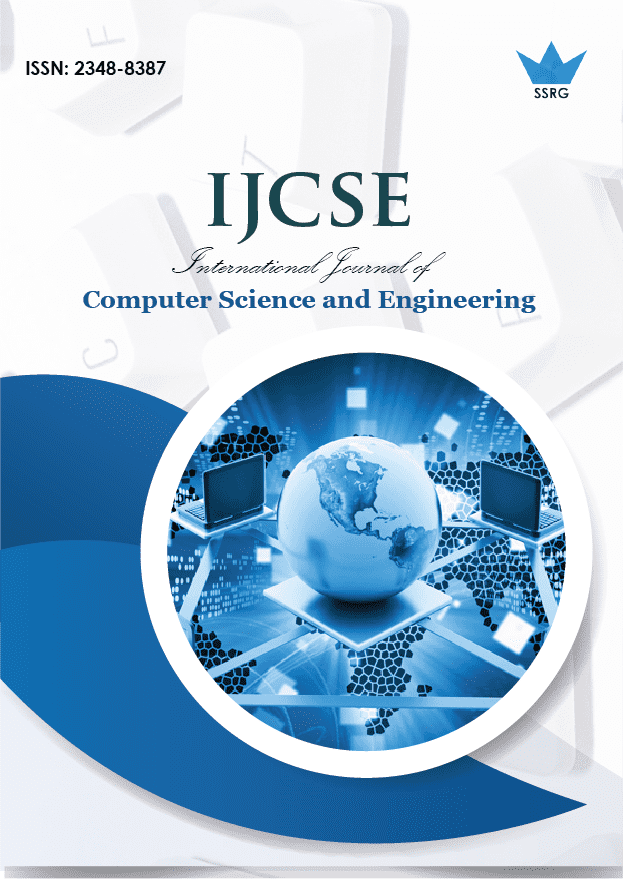Intelligent AI Agents for Fraud and Abuse Detection: Leveraging Machine Learning, NLP, and Behavioural Analytics for Enhanced Security

| International Journal of Computer Science and Engineering |
| © 2025 by SSRG - IJCSE Journal |
| Volume 12 Issue 4 |
| Year of Publication : 2025 |
| Authors : Anirban Majumder |
How to Cite?
Anirban Majumder, "Intelligent AI Agents for Fraud and Abuse Detection: Leveraging Machine Learning, NLP, and Behavioural Analytics for Enhanced Security," SSRG International Journal of Computer Science and Engineering , vol. 12, no. 4, pp. 17-22, 2025. Crossref, https://doi.org/10.14445/23488387/IJCSE-V12I4P103
Abstract:
Fraud and abuse in financial transactions, healthcare claims, and digital interactions pose significant challenges to organizations worldwide. The conventional rule-based detection approaches are often limited in adapting to evolving fraudulent tactics. This paper explores the development of intelligent AI agents for fraud and abuse detection, leveraging Machine Learning (ML), Natural Language Processing (NLP), and Behavioural Analytics to enhance security and risk mitigation. To generate models, the AI solution incorporates supervised and unsupervised Machine learning models for finding deviations through anomaly detection, NLP approaches for text-based fraud identification and behavioural analytics to permit recognition of deviations in user activity. Leveraging these state-of-the-art approaches helps the system to enable real-time detection and prevention of fraudulent activities, enhancing accuracy and reducing false positives.
This approach has effectively identified sophisticated instances of fraud across various industries , including financial services, healthcare, and e-commerce. Furthermore, AI-driven fraud detection significantly improves operational efficiency, lowers losses, and enhances cybersecurity protections.
Keywords:
Fraud detection, Artificial intelligence, Machine learning, Natural language processing, Behavioural analytics, Cybersecurity.
References:
[1] Antonis Papasavva et al., “Application of AI-Based Models for Online Fraud Detection and Analysis,” arXiv, pp. 1-41, 2024.
[CrossRef] [Google Scholar] [Publisher Link]
[2] Md Kamrul Hasan Chy, “Proactive Fraud Defense: Machine Learning's Evolving Role in Protecting Against Online Fraud,” World Journal of Advanced Research and Reviews, vol. 23, no. 3, pp. 1580-1589, 2024.
[CrossRef] [Google Scholar] [Publisher Link]
[3] Ruinan Zhang, Fanglan Zheng, Wei Min, “Sequential Behavioral Data Processing using Deep Learning and the Markov Transition Field in Online Fraud Detection,” arXiv, pp. 1-5, 2018.
[CrossRef] [Google Scholar] [Publisher Link]
[4] Chandra Shekhar Pareek, “From Detection to Prevention: The Evolution of Fraud Testing Frameworks in Insurance through AI,” Journal of Artificial Intelligence, Machine Learning & Data Science, vol. 1, no. 2, pp. 1-8, 2023.
[CrossRef] [Google Scholar] [Publisher Link]
[5] Albert Y.S. Lam, “Artificial Intelligence Applications in Financial Technology,” Journal of Theoretical and Applied Electronic Commerce Research, vol. 20, no. 1, pp. 1-5, 2025.
[CrossRef] [Google Scholar] [Publisher Link]
[6] Abdulalem Ali et al., “Financial Fraud Detection Based on Machine Learning: A Systematic Literature Review,” Applied Sciences, vol. 12, no. 19, pp. 1-24, 2022.
[CrossRef] [Google Scholar] [Publisher Link]
[7] Petros Boulieris et al., “Fraud Detection with Natural Language Processing,” Machine Learning, vol. 113, pp. 5087-5108, 2024.
[CrossRef] [Google Scholar] [Publisher Link]
[8] Ramiz Salama, Diletta Cacciagrano. and Fadi Al-Turjman, “Connecting AI and Blockchain to Improve Security of Financial Services,” Advances on P2P, Parallel, Grid, Cloud and Internet Computing, vol. 232, pp. 67-77, 2024.
[CrossRef] [Google Scholar] [Publisher Link]
[9] Eman Nabrawi, and Abdullah Alanazi, “Fraud Detection in Healthcare Insurance Claims Using Machine Learning,” Risks, vol. 11, no. 9, pp. 1-11, 2023.
[CrossRef] [Google Scholar] [Publisher Link]
[10] Mayra Macas, Chunming Wu, and Walter Fuertes “A Survey on Deep Learning for Cybersecurity: Progress, Challenges, and Opportunities, Computer Networks, vol. 212, 2022.
[CrossRef] [Google Scholar] [Publisher Link]
[11] Alejandro G. Martín et al., “An Approach to Detect User Behaviour Anomalies within Identity Federations,” Computers & Security, vol. 108, pp. 1-18, 2021.
[CrossRef] [Google Scholar] [Publisher Link]
[12] IBM, IBM Safer Payments – Real-time Payment Fraud Detection. [Online]. Available: https://www.ibm.com/products/safer-payments
[13] Google Cloud, Financial Fraud Detection with AI, 2023. [Online]. Available: https://cloud.google.com/solutions/financial-fraud detection
[14] Darktrace, Enterprise Immune System – Cyber AI. [Online]. Available: https://www.darktrace.com/en/products/enterprise-immune-system
[15] PayPal, How We Fight Fraud with AI. [Online]. Available: https://newsroom.paypal-corp.com
[16] FICO, Falcon Fraud Manager, 2025. [Online]. Available: https://www.fico.com/en/products/fico-falcon-fraud-manager
[17] SAS, Fraud Detection and Prevention with SAS AI. [Online]. Available: https://www.sas.com/en_us/solutions/fraud-detection.html
[18] Halima Oluwabunmi Bello, Developing Predictive Financial Fraud Models Using AI-Driven Analytics within Cybercrime-Resilient Security Ecosystems, vol. 6, no. 1, pp. 5055-5069, 2024.
[CrossRef] [Google Scholar] [Publisher Link]
[19] Oluwatobi Timothy Soyombo et al., “Reviewing the Role of AI in Fraud Detection and Prevention in Financial Services,” International Journal of Science and Research Archive, vol. 11, no. 1, pp. 2101-2110, 2024.
[CrossRef] [Google Scholar] [Publisher Link]
[20] Nitin Liladhar Rane, Saurabh P. Choudhary, and Jayesh Rane, “Blockchain and Artificial Intelligence (AI) Integration for Revolutionizing Security and Transparency in Finance,” SSRN, pp. 1-21, 2023.
[CrossRef] [Google Scholar] [Publisher Link]
[21] Abayomi Titilola Olutimehin, “The Synergistic Role of Machine Learning, Deep Learning, and Reinforcement Learning in Strengthening Cybersecurity for Cryptocurrency Platforms,” SSRN, pp. 1-23, 2025.
[CrossRef] [Google Scholar] [Publisher Link]
[22] Halima Oluwabunmi Bello, “Integrating Behavioral Biometrics and Machine Learning to Combat Evolving Cybercrime Tactics In Financial Systems,” International Journal of Computer Applications Technology and Research, vol. 14, no. 2, pp. 121-133, 2025.
[CrossRef] [Google Scholar] [Publisher Link]
[23] Balagopal Ramdurai, “Large Language Models (LLMs), Retrieval-Augmented Generation (RAG) Systems, and Convolutional Neural Networks (CNNs) in Application Systems,” International Journal of Marketing and Technology, vol. 15, no. 1, pp. 1-14, 2025.
[Google Scholar] [Publisher Link]
[24] Osama Alkadi et al., “A Deep Blockchain Framework-Enabled Collaborative Intrusion Detection for Protecting IoT and Cloud Networks,” IEEE Internet of Things Journal, vol. 8, no. 12, pp. 9463-9472, 2021.
[CrossRef] [Google Scholar] [Publisher Link]

 10.14445/23488387/IJCSE-V12I4P103
10.14445/23488387/IJCSE-V12I4P103